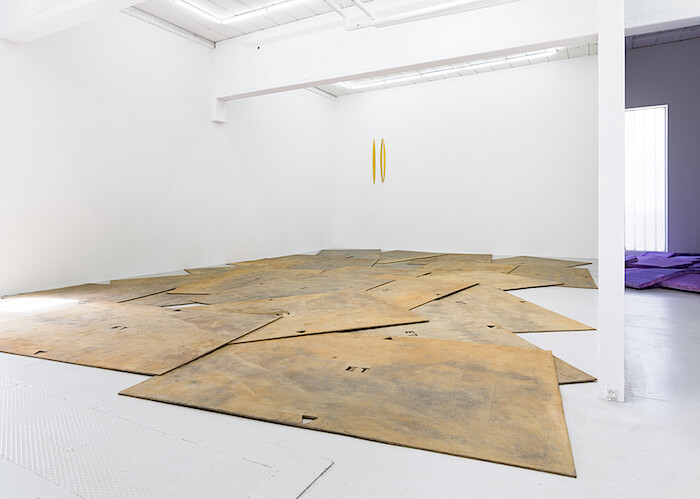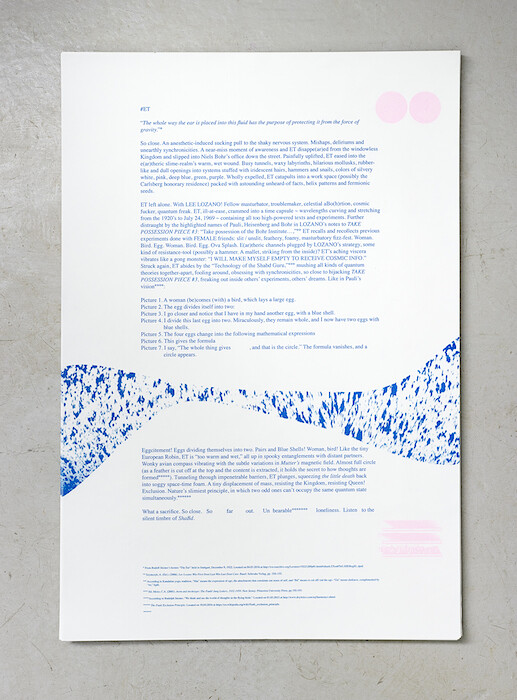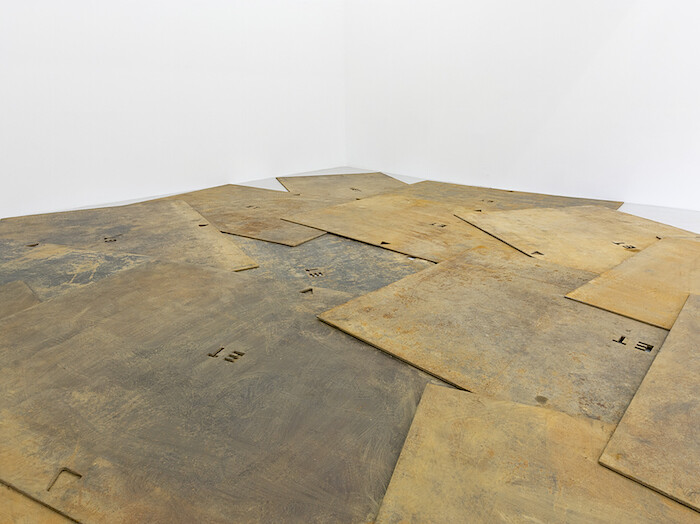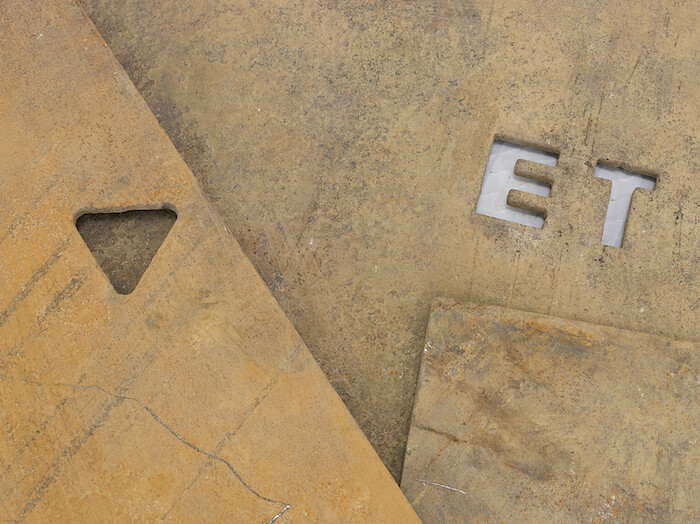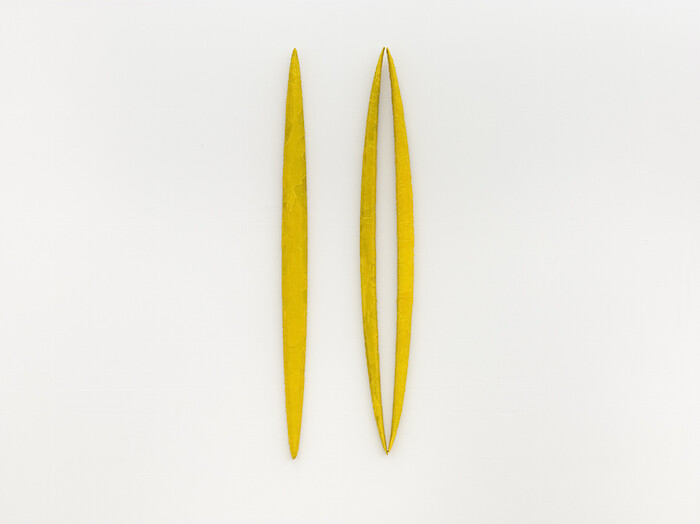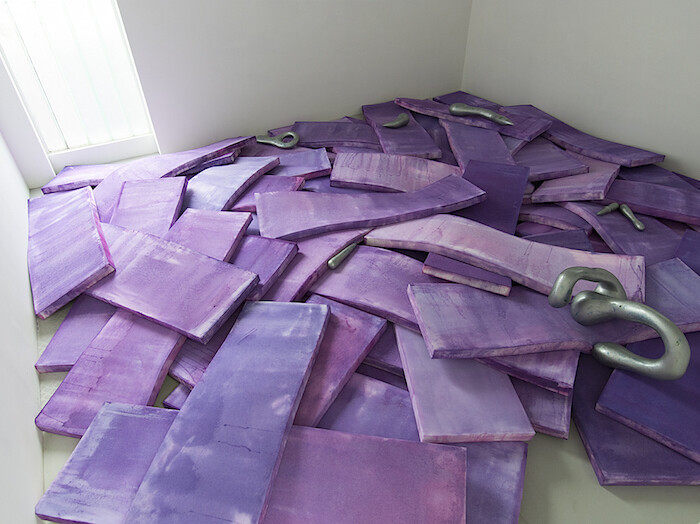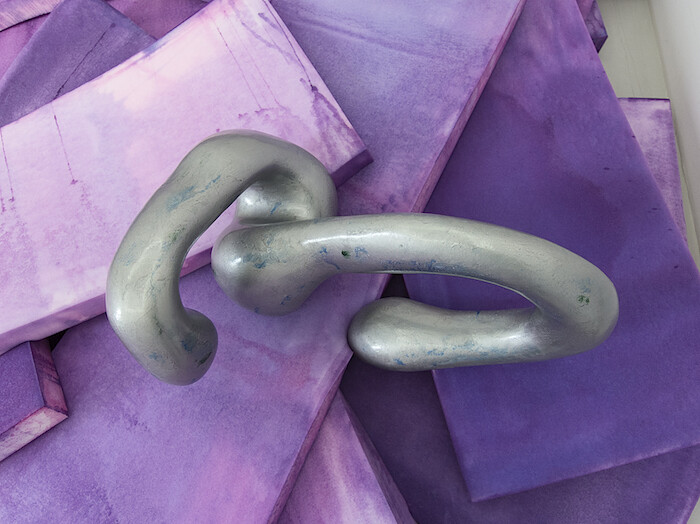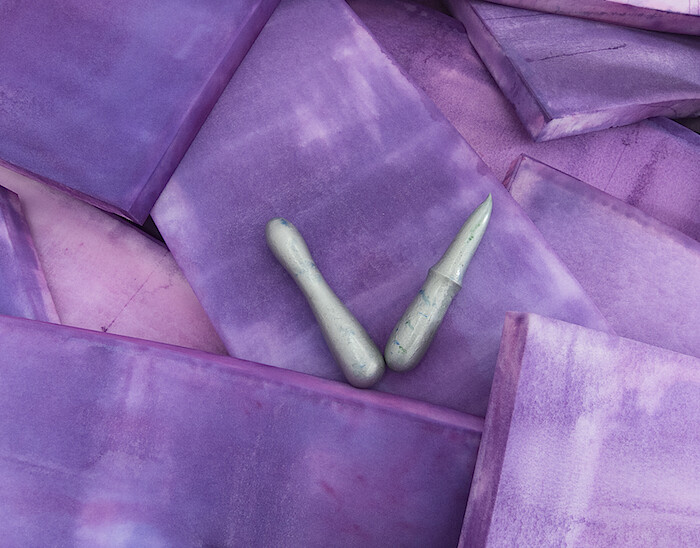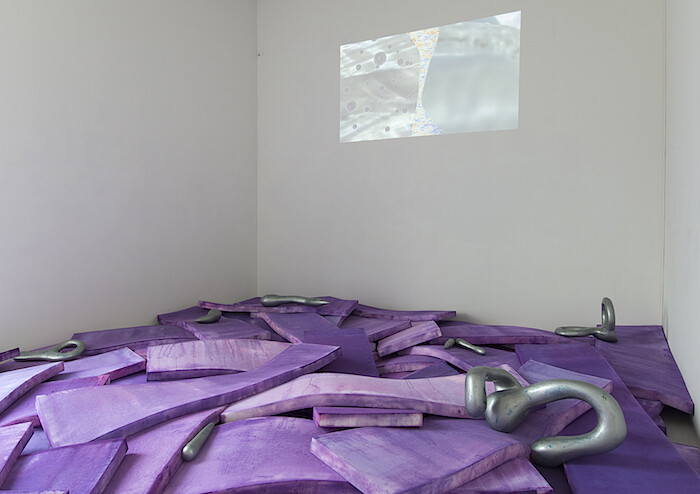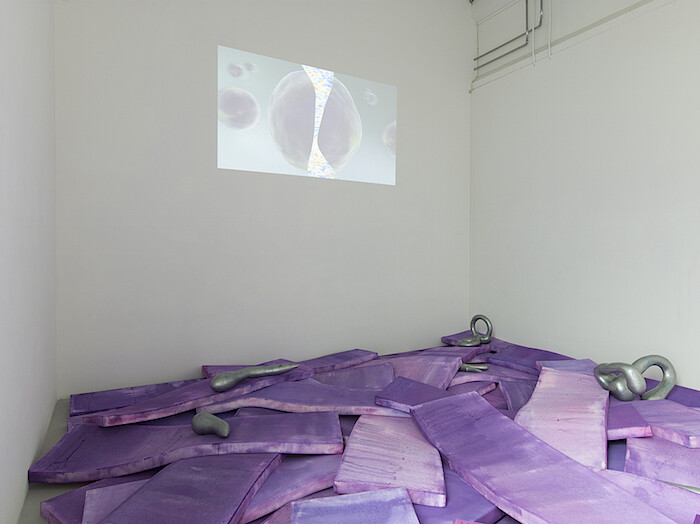Lea Porsager’s solo show at Nils Stærk pulls viewers into a universe “packed with astonishing unheard-of facts, helix patterns and fermionic seeds” through the eyes of #ET. In #ET (all works 2016), a text authored by the artist, Porsager’s extraterrestrial alter ego of sorts takes viewers at full speed through a dense set of references ranging from Rudolf Steiner’s idiosyncratic theories of the ear; a dream by quantum physicist Wolfgang Pauli as told to Carl Jung; and the polar energies of Kundalini yoga. By way of these leads, some footnoted, readers weave in and out of the esoteric and the scientific, of personal and artistic experiences, and a thought-flow carried through the multi-dimensional inquiries that Porsager often considers: the entanglement of temporalities, spaces, bodies, and experience in both past and present.
Carefully scripted and edited to encompass the synergies and contradictions of myriad research sources, Porsager’s text—a work in its own right, custom-printed on paper—yields its power from a logic that exists outside the rational. Her words unfold as poems coursing with an internal rhythm, igniting an encounter with the other more minimalist components that make up the exhibition. In Twenty-two Ground Protection Mats ~ ET, #ET’s initials are cut out of the large, flat, rusted iron sheets covering the gallery floor. Spread out, the heavy industrial readymades gain a compositional lightness that recalls Richard Serra’s carefully balanced steel-plate works of the 1960s and ’70s. In her writing, however, Porsager evokes a contemporary of Serra, Lee Lozano—in upper case to mimic Lozano’s own predilection when writing—an artist whom Porsager evidently feels an affinity with.
Porsager’s work insists on a sphere of formalism concerned not just with volume, mass, and horizontality, but also with material sensibilities that hold other powers. On the back wall, two complementary abstract yellow shapes form an undecipherable sign (Wax Slits ~ WarmWetWound). Up close, the sculptural pair surprises by revealing an uneven surface cast not in metal but in beeswax, related to the intriguing landscape that unfolds in the next space, where hand-painted purple foam mattresses are unevenly spread across the gallery floor (Fifty-six Mattresses ~ Space-time Foam). In between the piles lie seven silver-colored abstract sculptural forms, one charged with a sharp-edged puncturing potential (Earplug I), another (Organ of Balance (Left Ear Particle III)) recalling the slug-shaped bronze sculptures and other “thought forms” Porsager has explored in the past. Several of the larger forms—as alluded to in the series’ title, “Organ of Balance”—are abstractions of the organ that the philosopher and esotericist Rudolf Steiner claimed connects us to ethereal forces: the inner ear.
The inner ear reappears projected above the purple foam mattresses in Disrupted E(ar)thereal Fantasy (Ova Splash), which combines film sequences of naked female bodies with gelatinous 3D-animated elements. The abstract ear floats alongside circular dark purple shapes moving like microscopic viruses inside a body. A digital fluid runs vertical on the screen. Yet there is the sense that these visual elements, these image-worlds, do not occupy the same space or time as one another. Their independent coherency points to Porsager’s ongoing exploration of temporality as not linear but flowing, like a set of strong simultaneous currents. The sculptural pile of “space-time foam” becomes an unstable entity, like the ear hovering in an unknown space, not beholden to gravity. This constellation of objects and images, like all of Porsager’s work, attempts to contain “synchronicities” (Jung’s term for “meaningful coincidence,” which the artist uses in her text), and to create a liminal space where personal experience is entangled with strands of scientific, philosophic, and artistic knowledge.
In the film, around a colorful digital stream with the liquid graininess of a live ultrascan image, polarized footage reveals a naked female, caressing herself while wrapped in snakelike coils, her mouth sucking an egg-like shape in close-up; the egg repeatedly releases fluids, as in the Ova Splash of the work’s title. We are drawn back into her text, into the messiness of the bodily and collective experiments performed in private with female friends that forms the starting point for many of the artist’s works. The mats, the foam, the sculptures are the abstract residue, the transformed matter that remains after the fact, enveloped in a distinct kind of silence. The power of the collective “female” force is ever present. In Porsager’s work, the body is the convergence of both intellectual and intuitive knowledge, a site of negotiation between ego(s) and the surrounding world.

